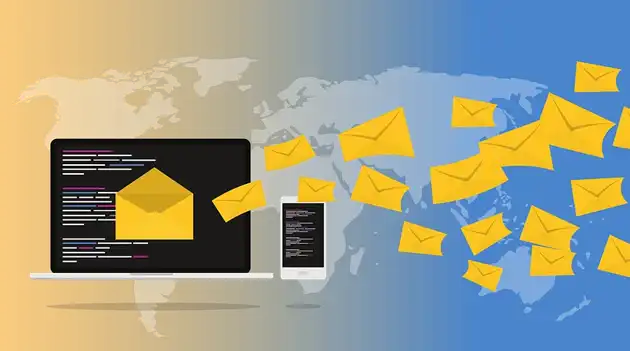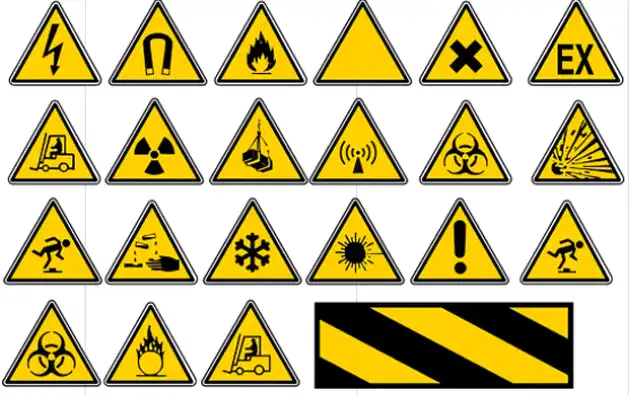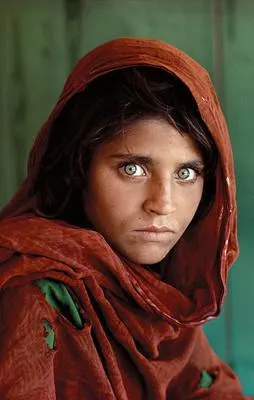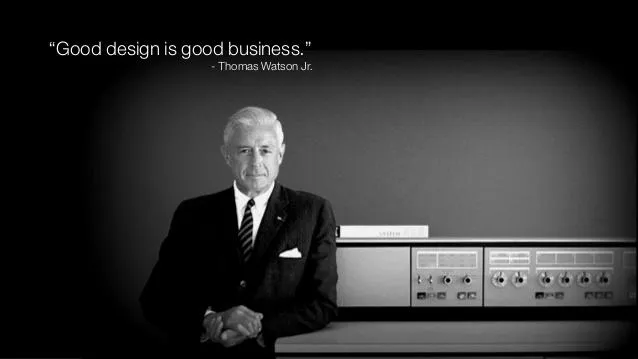Overview:
This blog highlights the principles of visual communication, an area of design that associates itself with visual elements like images, graphics, and symbols to surpass language barriers and develop improved subject understanding. Considering the tech advancements, visual communication today rides on digital tools such as infographics and motion graphics. The idea is to make extensive use of easy to interpret graphics by optimising maps and caution signs. Essentially, visual communication makes storytelling, creativity, and clear communication possible universally. Some of the career avenues in the field include graphic designing, UX/UI designing, filmmaking, etc.
Table of contents
- What is communication?
- What is Visual communication?
- Why do we need Visual Communication?
- Visual Communication and its types
- Classic Examples of Visual Communication:
- Five essential Principles of Visual Communication
- What kind of job roles are there in visual communication?
- Visual Communication and Society
- Key Takeaways:
- FAQs:
Communication design is emerging as one of the hottest topics in the realm of mass communication but how is it different from other forms of communication and in what ways do we see it changing how we consume information? Let us delve deeper to understand it through the principles of communication design.
What is communication?
Communication is the process of transferring one’s knowledge, thoughts, feelings, or ideas to another person. Humans are undoubtedly social beings and need to live in communities in society to survive. Therefore, it is of absolute importance for them to communicate with each other. One starts to communicate the moment they are born. Although a human baby does not start talking until a year, they communicate their needs and wants nevertheless through eyes, blabbering, or body language.

Communication is a convoluted yet simple process of making the other person understand you. It can be verbal or nonverbal, written or visual, or just body language without any other apparent sign. However, there are a few elements that stay true across all forms of communication. The seven elements namely, sender, encoding, message, medium, receiver, decoding, and feedback are vital for a successful conversation. They can be briefly defined as:
-
Sender:
A sender is a source from which the information or the message is being transferred. -
Encoding:
A sender moulds the information according to the communication system they are referring to and encodes the message according to that system. For example, when one speaks, language becomes a medium in which different things are assigned different signs such as an apple in English and pomme in French. -
Message:
Message refers to the ideas or information that are being transferred. -
Medium:
Medium refers to the mode or channel through which a message is transferred. For example, emails, graphics, or communication through symbols. -
Receiver:
The receiver is at the other end of the conversation who receives the information. Decoding:
The encoded message sent by the source is decoded by the receiver using the same coding tools used by the sender in order to comprehend the message. However, the receiver’s viewpoint, experience, and style of interpretation play a vital role in this step.-
Feedback:
The process of communication can never be completed before the receiver responds to the received message. The feedback of the receiver decides the completion of the process.

What is Visual communication?
Visual communication has the power to evoke emotions, enhance storytelling and create memorable experiences. It is the process of conveying information and ideas through visual elements such as images, symbols, typography and colours. It is a powerful means of communication that transcends language barriers and engages viewers in a visually compelling manner. Visual content attracts and retains attention more effectively than text alone. It helps in conveying messages quickly, making it ideal for social media platforms, websites, and digital advertisements.
Visual communication has evolved significantly from its early stages to the digitally driven world we live in today. In the past, visual communication relied heavily on traditional mediums such as print, paintings, and hand-drawn illustrations. Artists and painters worked with physical tools like brushes, pens, and paper to convey their messages. However, with the advent of digital technology, the landscape of visual communication has been revolutionised. Digital mediums, such as graphic design software, digital cameras, motion graphics tools, and interactive media platforms, have emerged as powerful tools for creating and sharing visual content. This shift has opened up new avenues for creativity, collaboration, and engagement, making visual communication an integral part of our digitally interconnected world. Visual Communication is like a master storyteller who weaves tales through captivating visuals, igniting emotions and leaving a lasting impression.
Why Do We Need Visual Communication?
“Did you know that our brains process visuals a staggering 60,000 times faster than text?”
In a world saturated with information overload, visual communication acts as a visual storyteller, helping us navigate the vast sea of content and creating memorable experiences that linger in our minds. Imagine scrolling through your social media feed and stumbling upon a captivating infographic that effortlessly presents complex data in a visually appealing and easy-to-understand format. In an instant, you grasp the key insights and share it with others, spreading knowledge and sparking conversations.
Effective visual communication adds depth, personality, and a touch of magic to otherwise mundane content. Whether it's a stunning logo that instantly represents a brand's values, an eye-catching poster that invites you to an exciting event, or a beautifully designed website that guides you effortlessly through its pages - visual communication plays a pivotal role in engaging, inspiring, and connecting with audiences. It is the universal language that brings us together, surpassing cultural barriers and touching our very core. It acts as a guiding light amidst the overwhelming sea of information, ensuring that our messages are not only seen but also understood and treasured. Through its captivating forms, visual communication becomes the bridge that connects us, resonating deep within our souls.
Visual Communication plays a significant role in various aspects of our lives and is essential for the following reasons:
Enhancing understanding:
Visuals have the ability to simplify complex information and make it more accessible and understandable. They can effectively break down complex concepts, data, or processes into visual representations that are easier to grasp. Visual communication allows for quick comprehension and aids in conveying information more efficiently.Increasing engagement:
Visuals are highly engaging and capture attention more effectively than text alone. The use of colours, images and multimedia elements in visual communication attracts and holds the viewer's interest, making the content more memorable and impactful. It helps to create a strong emotional connection and facilitates better retention of information.Overcoming language barriers:
Visual communication can transcend language barriers by using universally recognizable symbols, icons and images. It enables effective communication in diverse cultural and linguistic contexts, allowing people from different backgrounds to understand and interpret visual messages regardless of their native language.Conveying emotions and experiences:
Visuals have the power to evoke emotions and convey experiences in a way that words alone cannot. Through visual communication, artists, designers and storytellers can express feelings, moods and narratives, creating a deeper and more immersive experience for the audience. Visuals stimulate the imagination and provide a more holistic understanding of the subject matter.Fostering creativity and innovation:
Visual communication encourages creative thinking and innovation. It allows individuals to express their ideas visually, explore different perspectives and communicate concepts that are not easily conveyed through words alone. Visual communication stimulates imagination, encourages problem-solving and promotes innovative solutions to challenges.
Visual Communication and its types
Visual communication is the practice of communication through visual elements such as videos, pie charts, videos, infographics, etc. One can infer that any communication that employs one’s sense of sight to deliver a message without the usage of any verbal cues is termed visual communication. A language is a continually evolving man-made tool that has developed in alignment with human societies. It is designed to work in a coalition with the cultural, social, political, and historical paradigms and cater to the needs of a specific community. Therefore, it can vary based on these presupposed premises that go into the fundamental creation of language so much that the same sign can have extreme connotations that contradict each other depending on the context and location.
In such a scenario, visual communication is an effective method to get across one’s ideas in a clear and concise manner. Even when two individuals do not understand each other’s language, they can easily decipher visuals to understand each other. The human mind registers visuals with way more ease than words or texts. The advancement in technology that has been realised by human civilisation in the last few decades has impacted the ways and forms of communication as well. It has led to the emergence of new types of visual forms of communication on a daily basis. Moreover, visual aids have proved to be an intriguing method to make constructive communication. A few of them are described below:

-
Graphics:
The most crucial difference between graphic design and visual communication is that prior focuses on the creation of specific visual elements (logos, layouts, etc.), while the latter utilises those elements alongside various tools (photography, animation) to convey a broader and more comprehensive message. Despite the numerous technological inventions, data management and comprehension continues to be a tedious task. Even though the software can store and regulate data for you, it cannot automatically make it seem intellectually stimulating to a person. But graphs have the ability to compare data easily while simultaneously guarding the human mind against the monotonicity of data management. For example, a bar graph or pie chart. Maps:
Maps have always remained an effective element of visual communication. Even before Google took over and electronified maps and GPS systems, maps already played an important role in travelling and exploring geographical locations. They can also be used to showcase specific issues of a community such as which geographical locations have an abundance of resources or which areas of the country are the most fertile.Models:
Growing up, every student is taught how an atom is the building unit of the universe but it is sometimes difficult to understand how they work. Another example of 3d visual aids, models come in handy at such a time. Models are micro versions of a vision that can be used to make a point or understand a concept. Other examples can be the solar system or miniature models of building designs.Photographs:
Photographs are another basic element of visual communication. English author Edward Bulwer Lytonn said that a pen is mightier than a sword. However, a picture is worth a thousand words. They can rejoice in the remains of experiences from a long time ago and communicate a thousand emotions through them or pieces of evidence at a crime scene. They can also be presented as snippets of reality from a backward town and used to compare with the sky-reaching buildings in a city.


Classic Examples of Visual Communication:
In the ever-evolving landscape of visual communication, print and digital space offer a dynamic duo of tools. Here are some examples of visual communication:
Share a Coke Campaign by Coca Cola :
Coca-Cola employed the highly creative marketing gimmick "Share a Coke" to target individuals rather than the general public. This allowed them to interact with the customer on a much more intimate level, strengthening the link between them and the brand.
Coca cola launched the campaign in 2011 in Australia and after receiving such positive press, other nations decided to follow suit. The simple notion of putting people's names on Coca-Cola bottles had a remarkable impact on sales. Everyone tried to track down a bottle or can with their name on it as part of the campaign and they promptly took to social media to share their individualised bottle.
The fact that the advertisement immediately urged viewers to purchase and share a Coke with friends was one of the factors contributing to its success. With its second call to action, Coca-Cola created a remarkable social media campaign by encouraging people to share their Coke with others online.
IKEA: Steps

Some categories and requests in advertising are regarded as "boring"; these are mainly commercial goods and demands like brochures or specific tactical commercials. A campaign to publicise the launch of a new retail location can likewise qualify as monotonous. However, some creative teams see this as a challenge and make an effort to provide engaging work for routine chores as well. IKEA has a new store in London's Greenwich neighbourhood, but that news isn't very noteworthy. However, the team used the fact that the store contains eco-friendly elements like solar panels, rainwater collection systems, and a roof garden to fabricate a tale. As a result, it was advertised as a "sustainable store" that is best reached by walking.
KFC: “FCK” Campaign:

This apology advertisement is one of the best of all time. KFC's operations in the UK ran out of chicken in February 2018. KFC stabbed customers in the back with a full-page advertisement in the UK newspaper Metro, rearranging its three famous initials to provide an explicit but amusing response to the shortage of chicken at a store. A bucket marked "FCK" from KFC is shown in the advertisement. The company then apologised for what it realises was an unacceptable mistake below its design. Businesses must keep in mind that an authentic apology is the best policy and it can even be made fun of. A company recovered from negative press and even emerged on the other side with a net-positive outcome for the brand by combining humility, class, humour and company pride in a message, as seen in the KFC's advertisement.
Five essential Principles of Visual Communication
Across millennia, from prehistoric etchings to digital icons, art's influence on visual communication transcends language barriers, impacting how societies perceive, interact, and shape the world.Visual communication, in general, helps to visualise better and put things in perspective. However, one must understand that putting a lot of unnecessary information might make these visual aids look cluttered and more difficult to apprehend. Therefore, one must keep in mind the five basic principles of visual communication in order to smoothen the process and deliver information efficiently. But what are these principles of visual communication that hold the potential to significantly impact and alter the entire process of communication? The five principles are as follows:
Clarity:
Clarity is one of the fundamental principles of visual communication. Visual communication heavily relies on the receiver’s sense of perception and interpretation of the message without any difficulty. If the medium becomes too complicated for the target audience to understand, the visual aids will lose their value and meaning. For better and effective communication, the purpose of the visual aid must be clear and concise. For example, if an ad for a media campaign does not use appropriate visuals, it can create a sense of confusion among the audience and mislead them which in turn, will affect the brand value inversely.Design:
Design encompasses the most fundamental properties of visual communication and design. All the visual elements must balance each other for precise output. Whether it is social media ads or graffiti arts on walls, the design must consider the viewpoint, understanding, and experiences of the target audience to create an effective composition. Even though it is said that beauty lies in the eyes of the beholder, a faulty design is an objective entity. For example, a visual message through memes might look unprofessional and out of place in a boardroom meeting regarding architecture.Contrast:
Contrast is yet another important element of visual communication. Any art is impactful when it is successful in creating a balance between its elements. They must be arranged in a manner that the elements complement each other instead of outshining one another. One must understand how to put different colours, sizes, shapes, textures etc. to create a laying impact. They can be used to adjust focal points and highlight elements in agreement with their purpose.Proximity:
Proximity refers to the relationship shared by these elements of visual communication. Elements that interact with each other and positively add to the design should be kept in close proximity so that they are comprehensible to any layman. In literature, one studies the ideas of the philosopher Plato and Aristotle in relation to each other and therefore, they add context to the ideas and make them more memorable. Similarly, connected elements should be put together for greater clarity.Rhythm:
Rhythm is the last yet essential principle of visual communication. Any artist or musician would understand the role of rhythm-like structure in any artistic piece. Although it is conventionally related to music, this principle plays an important part in communication as well. When one creates a visual aid visual message, the elements must connect with others and flow without jargon.
What kind of job roles are there in visual communication?
From the masterful strokes of a graphic designer crafting visually stunning designs to the digital wizardry of an animator breathing life into characters, visual communication is a realm of endless possibilities. It is where UX/UI designers create immersive digital experiences, web designers build interactive online landscapes, and branding specialists shape the very essence of a company's identity. Visual Communication opens up a wide variety of avenues, where creativity knows no bounds and every image tells a captivating story.
Listed below are some career opportunities in Visual Communication:
Graphic Designer:
Graphic designers create visual concepts using computer software or by hand, and they develop layouts and designs for various print and digital mediums. For example, a graphic designer might create a visually stunning logo for a brand.
Art Director:
Art directors are responsible for the visual style and imagery in various forms of media, including print, digital, and film. They oversee the artistic direction of projects and collaborate with other creative professionals. For instance, an art director may work on a film production, ensuring that the visual elements align with the director's vision.
UX/UI Designer:
The scope of UX/UI design in India is booming, with a rapidly growing demand for skilled professionals across various industries. UX/UI designers focus on creating user-friendly and visually appealing interfaces for digital products, such as websites and mobile applications. They consider user experience, interaction design, and visual aesthetics. As an example, a UX/UI designer might design a sleek and intuitive mobile app interface for a banking application.
Filmmaker:
Film makers oversee and manage the entire process of creating a film, from concept development to production and post-production. They bring stories to life on the screen through their creative vision, directing actors, managing the technical aspects, and shaping the final cut of the film.
Commercial Artist:
Commercial art is a form of art created for commercial purposes, primarily advertising. It is used to inform, promote, and sell goods and services by using visual images to communicate a message. Commercial artists create art used to sell products, like logos, packaging, and advertisements. They help visually promote the product or company by creating visually appealing designs that attract the target audience. Commercial artists use a variety of mediums, including digital and traditional art forms, to create their work. Their work can be seen in magazines, newspapers, billboards, product packaging, and other forms of advertising.
Animator:
In the discipline of digital communication, animation plays a crucial role in simplifying complex information, grabbing and holding attention, and fostering emotional connections with audiences. Animators bring static visuals to life through motion and storytelling. They use various techniques, including traditional hand-drawn animation and computer-generated imagery (CGI), to create animated sequences for films, video games, and multimedia projects. As an example, an animator may create lifelike characters and captivating visual effects for an animated feature film.
Branding Specialist:
Branding specialists develop and maintain brand identities for organisations, ensuring consistency across all visual elements. They work on logo design, brand guidelines, and marketing materials. For instance, a branding specialist might create a comprehensive visual identity for a new startup, including logo, colour palette, typography, and brand messaging.
Visual Communication and Its Impact on Society
Visual communication shapes society by influencing how we perceive and understand the world around us right now. Even though it does not take into view the predicaments of the visually impaired or differently abled community, it is, nevertheless, an effective form of communication. Especially with the incoming of various communication software such as skype or zoom or instant messaging apps such as Instagram, Facebook, or TikTok, visual communication has transgressed the temporal and geographical boundaries. One of the most interesting examples remains the use of these platforms during lockdowns when not only apps like these were a reminder of people existing outside one’s four walls, but also schools, offices, and colleges employed this communication software to function. Audiovisual communication through these platforms became a ray of hope in the pandemic.
Key Takeaways:
Visual communication is a form of communication that relies on visual elements to convey information, ideas and messages. It has the advantage of being able to simplify complex information, enhance understanding and evoke emotions as a viewer. It also helps overcome language barriers by using universally recognizable symbols, icons and images. Visuals also have the ability to convey emotions and experiences in a way that words alone cannot. Visual communication is used by artists, designers and storytellers to express feelings, moods and narratives.
Considering a career in visual communication design? Get expert insights and discover your perfect fit on our blog.
FAQs:
What is the scope of visual communication?
Ans: The scope of visual communication is vast and encompasses various disciplines and industries. It involves the use of visual elements to convey information, ideas and messages to a target audience.Graphic design, advertising, marketing, the arts, film, television, web design, and user interface design are just a few professions that use visual communication. It utilises a wide range of visual mediums, including images, typography, illustrations, symbols, colours and layout, to effectively communicate and engage with viewers.
2) What is the role of visual communication in our daily life?
Ans: Visual communication plays a significant role in our daily lives, permeating various aspects of our existence. From the moment we wake up until we go to bed, we encounter visual communication in numerous forms. It guides us through the navigation of our surroundings, from road signs that indicate directions to visual cues in public spaces that provide information and ensure safety. In advertising and marketing, visual communication captures our attention, influences our purchasing decisions and shapes our perceptions of products and brands. It enriches our entertainment experiences through films, television shows, and digital media, transporting us to different worlds and evoking emotions.
Explore more about Visual Communication Design
- Did you know some environmental photographers use special camera traps to capture rarely seen wildlife without disturbing their natural habitat?
- Is your design getting lost in translation? Discover the surprising influence of culture on communication design.
- Tired of static images? Does your content lack WOW factor? Master the art of finding captivating moving images with this animation webinar session. Watch now.
- Think you know design? This article will challenge your assumptions and show you how good graphic design can enhance your presentations, projects, and even your social media game
- Do not miss to check out this insightful webinar on the career opportunities in communication design at IIAD for expert opinions. For more information on the communication design course at IIAD, tap onto the link.





